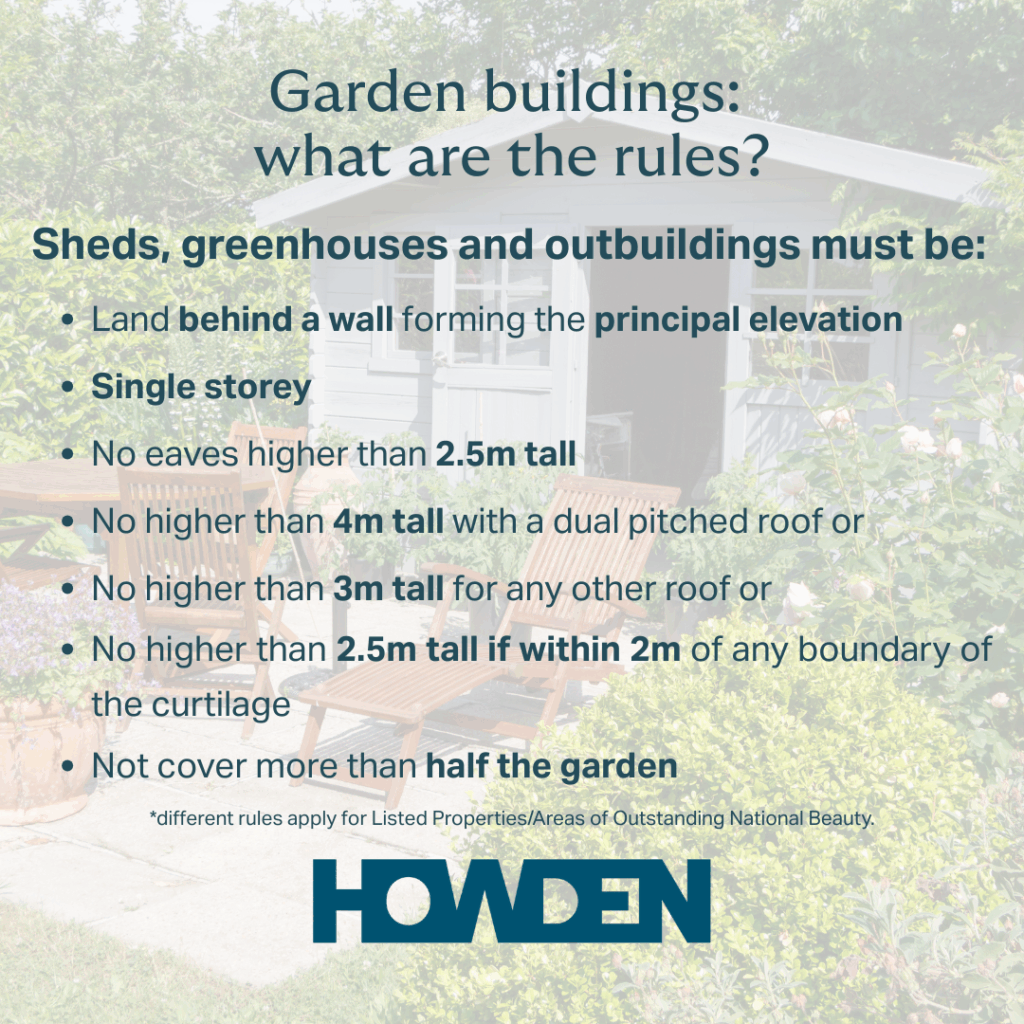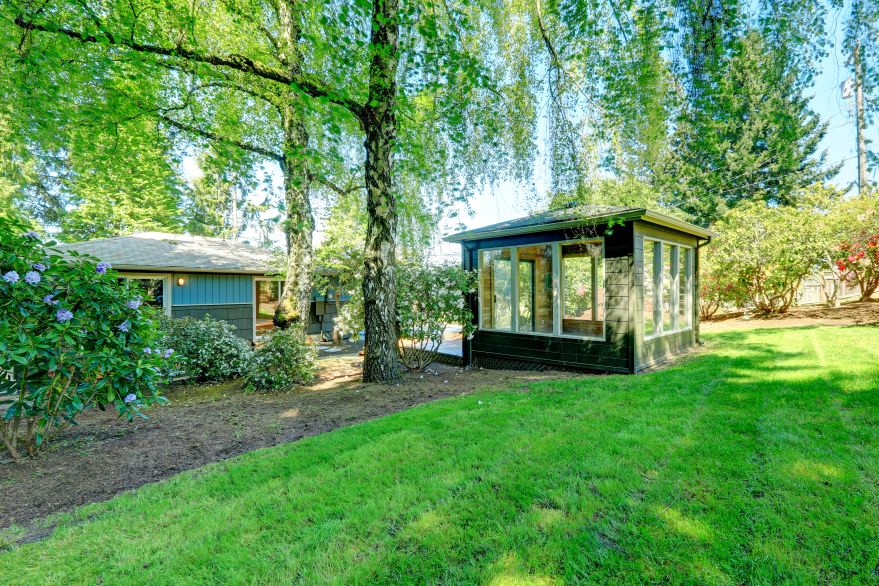Thinking of adding a new garden room, shed, or fence? Or maybe your neighbour’s latest DIY project has you wondering if it’s even allowed?
Whether you’re planning a peaceful retreat or side-eyeing a suspicious structure next door, it’s worth knowing what the law says about outbuildings, boundaries, and garden usage. Because when it comes to planning rules, what seems like a harmless upgrade could be a legal headache waiting to happen.
Outbuildings
In general, you do not need planning permission to build sheds, summer houses and other outbuildings. But there are limits and exceptions.

Size
Size is the major restriction. An outbuilding cannot be larger than 50% of the space around your property and the total floor area must not exceed 15m². If you’re located in a Conservation Area or Area of Outstanding Natural Beauty, the limit is 10m².
Height
The structure must be separate from the main house. If it’s within 2m of a neighbour’s fence, your building cannot be taller than 2.5m at the tallest point. If further than 2m from their boundary, you can build higher: the maximum is 4m with a dual pitched roof, or 3m for any other roof. Any closer than 1m of the boundary, then you should speak with your neighbour beforehand.
This counts for sheds, greenhouses and other outbuildings such as garden rooms. If you’re using it for a home office or for commercial reasons, you should be careful of the laws of nuisance.

Usage
Your activities must take into account the standards of a reasonable person. Loud or smelly activities could land you in legal trouble. Some properties, like new builds, could have covenants in place that stop houses being used for commercial purposes, so check your deeds before setting up shop.
You also need to keep in mind The Rights of Light Act 1959. Why? Well, it states that if a property has received daylight for the last 20 years, the occupier/owner is entitled to continue receiving that light.
Essentially, any garden structure, fence, hedge or tree cannot infringe on this right. If you feel your right to light has been breached by another property, you can apply to the courts for your light to be restored.
Can I build something on my front garden?
The short answer is no; you cannot erect an outbuilding on any land that is forward of the principal elevation. This is usually the front garden – but not always! If your property is built at right angles, this land could be to the ‘side’ when looking from the road. On an older cottage where the rear has been built to the road, you could find a large chunk of garden is out of bounds!
Fences and walls
You don’t need planning permission to build a new wall or boundary fence if it’s less than 2m tall, or 1m for front garden fences or fences adjacent to a highway or footpath. Any taller, and you need planning permission but it’s rare to get approval for walls above 3m high. These heights include any trellis topping.
Your chances might be better if you submit a joint application with your neighbour explaining the need for such a tall wall. But if you’re simply looking to block off a nuisance neighbour, then this probably isn’t the solution…

The question of who owns the fence will come down to the property’s deeds. You can by these for £3 on the Government website if you don’t have a copy. Small T marks on the title plan will indicate the owner on the title plan. Shared ownership is represented by two Ts joined together to form an H. In general, the owner will have the ‘good side’ of the fence going towards their neighbour/outside, as it helps prevent intruders using the beams to climb on.
It is your responsibility to keep your fences in a good state of repair, ensuring it does not pose a danger. Only the owner can paint, stain or alter their fence without permission. If you want to change the appearance of what’s visible on your side, speak to the property owner first. This is especially important if the property is rented – the tenant has no legal right to give permission.
Hedges and trees
If you and your neighbours can’t agree on a suitable hedge height, there is legislation that can help. A hedge taller than 2m is classed as a ‘high hedge’. Firstly, talk with your neighbour to explain that their hedge affects ‘reasonable’ enjoyment of your garden. Keep notes of the conversation.
If this doesn’t resolve the issue, you can contact your council. They will judge how high the hedge should be, taking into account whether it blocks light, a view, or how overbearing it is. Your complaint will either be rejected or the council will issue a notice for the hedge to be trimmed back.
For trees, you can prune branches that overhang into your garden, with your neighbour’s permission. You must do so without going onto their land, but you can climb into the tree to do so. You can only cut as far back as your boundary, and dispose of the cuttings.

Is your garden covered by home insurance?
Whether you’re building your dream garden escape or navigating a neighbourly dispute, it’s smart to stay on the right side of the law – and the fence! Planning rules can be tricky, and even a well-intentioned project can lead to unexpected claims or complaints.
That’s where Howden comes in. With tailored home insurance and expert advice, we help protect your property, your peace of mind, and your right to enjoy your space, legally and confidently.
Sources: Higgs LLP, Planning Geek, Planning Portal, Build Review
You could also read:
- Hidden risks in your garden
- Can you be insured for ‘travel anxiety’?
- Home improvements that don’t need planning permission
- Are you a target for ‘crash for cash’ scammers?
- Cyberattacks: how to protect your data
This is a marketing blog by Howden Insurance.

